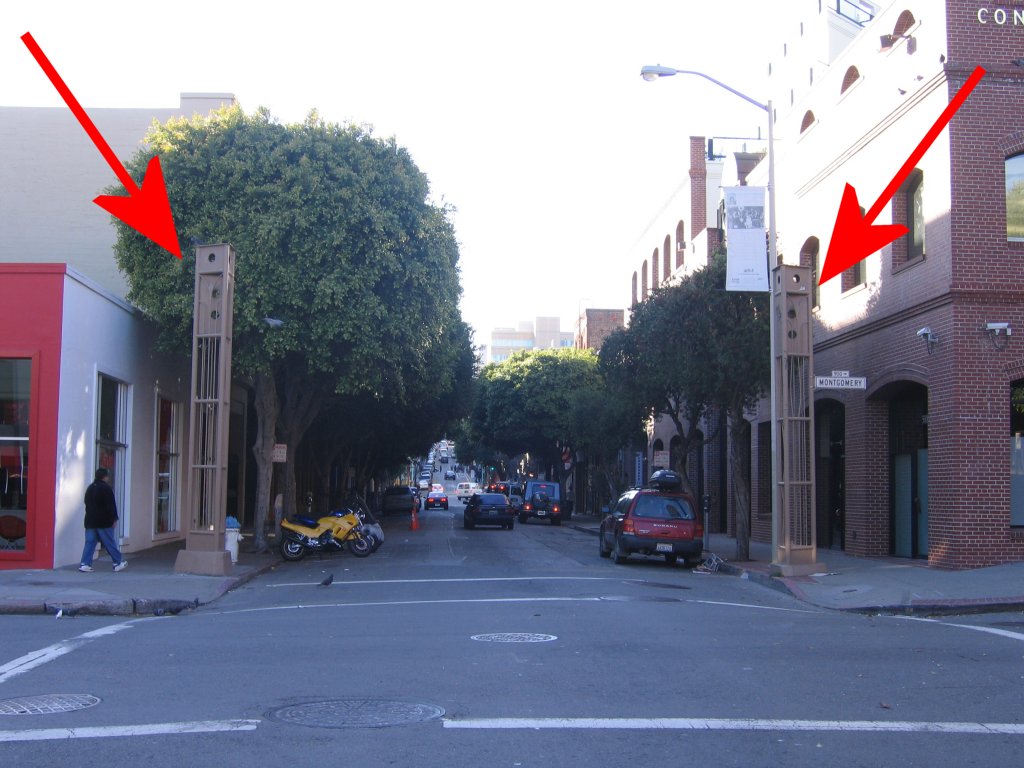 From the lack of information available for the timeframe 1917 through the 1930's, I can only assume this two block area kept a very low profile; a veritable ghost of it's former self.
From the lack of information available for the timeframe 1917 through the 1930's, I can only assume this two block area kept a very low profile; a veritable ghost of it's former self.
The first question in your mind should be, "Where the heck is International Settlement?" The answer would be: nowhere. To properly set the stage for why thre was an International Settlement, we need to have a little bit of history.
From the very beginnings of San Francisco's history, the Barbary Coast has been known as a lawless areaL extreme violence, illegal activities and one of the most depraved, dangerous and intriguing places to be. There were plenty of cheap rooms and cheaper dives, opium dens, shanghi saloons, brothels, dance halls, melodeons and gambling houses. Police were reluctant to venture within its boundaries. Through the years following San Francisco's Gold Rush all the way up until being burned to cinders by the 1906 fire, the Barbary Coast was a flickering red beacon of decadence and mayhem; It is impossible to overstate the no-holds-barred-depravity of this little spot of land.
From time to time, honest citizens would try to haul the Barbary Coast into line, but their efforts were generally ineffectual. It wasn't until 1913 when William Randolph Hearst of the San Francisco Examiner, began a publicized war against the Barbary Coast that the tide started to turn. In joint cooperation with reform-minded politicians and laws passed by the state Legislature, by 1917, all the cribs, cowyards and parlour houses had closed down ... 83 brothels and 40 saloons were gone.
 From the lack of information available for the timeframe 1917 through the 1930's, I can only assume this two block area kept a very low profile; a veritable ghost of it's former self.
From the lack of information available for the timeframe 1917 through the 1930's, I can only assume this two block area kept a very low profile; a veritable ghost of it's former self.
But in the 1940's, an attempt was made to revive the area into a nightclub mecca and a restaurant haven. Part of this scheme was to rename the area "International Settlement"; why .. who knows?
A snazzy new renovated image was needed and the idea of a street arch was borne. Two metal columns at the intersection of Pacific Avenue and Montgomery Street were connected by an arch emblazoned with the words "International Settlement".
 A similar arch was at Pacific and Kearny, the other end of the block. I haven't been able to find any source that explains the name. Contrary to its name, the area was certainly neither international nor a settlement. The block then became a hotbed of nightclubs, honky-tonks and eateries through the 1950's.
A similar arch was at Pacific and Kearny, the other end of the block. I haven't been able to find any source that explains the name. Contrary to its name, the area was certainly neither international nor a settlement. The block then became a hotbed of nightclubs, honky-tonks and eateries through the 1950's.
More interestingly, in December 1957, a movie named "Pal Joey" starring Frank Sinatra, Rita Hayworth and Kim Novack was released. At the very opening of the movie (approx. 3 or 4 minutes into it), you will see the sign over Pacific Street that reads "International Settlement" and there were night clubs on both side of the street Moulin Rouge, Bela Pacific, Sahara, Gay N' Frisky. Arabian Nights, Spider Kelly's, Barbary Coast, Goman's Gay 90's, etc. etc.
Sometime in the late 1950's/early 1960's, the arch was dismantled and today the only trace that remains is the pillars at Pacific Street and Montgomery Avenue. If you look at the picture at the top of the page, you'll see that I've put red arrows pointing to these pillars. I'm willing to bet that without those arrows, you never would have noticed the pillars. :-)
It was during World War II that the military put this block off limits to its personnel. Not to be thwarted by a mere military proclamation, many of the establishments simply moved one block north to Broadway. For whatever reason, Broadway was never redlined. For a while the newly moved business were classy, but they began their decline so that today, Broadway contains sleezy sex joints and tacky entertainment businesses.
Look again at the picture at the top of the page ... the block you're looking at was the heart of the Barbary Coast, along with the block in the other direction behind you. It's pretty doggone quiet now ... as well as being beautiful to look at.